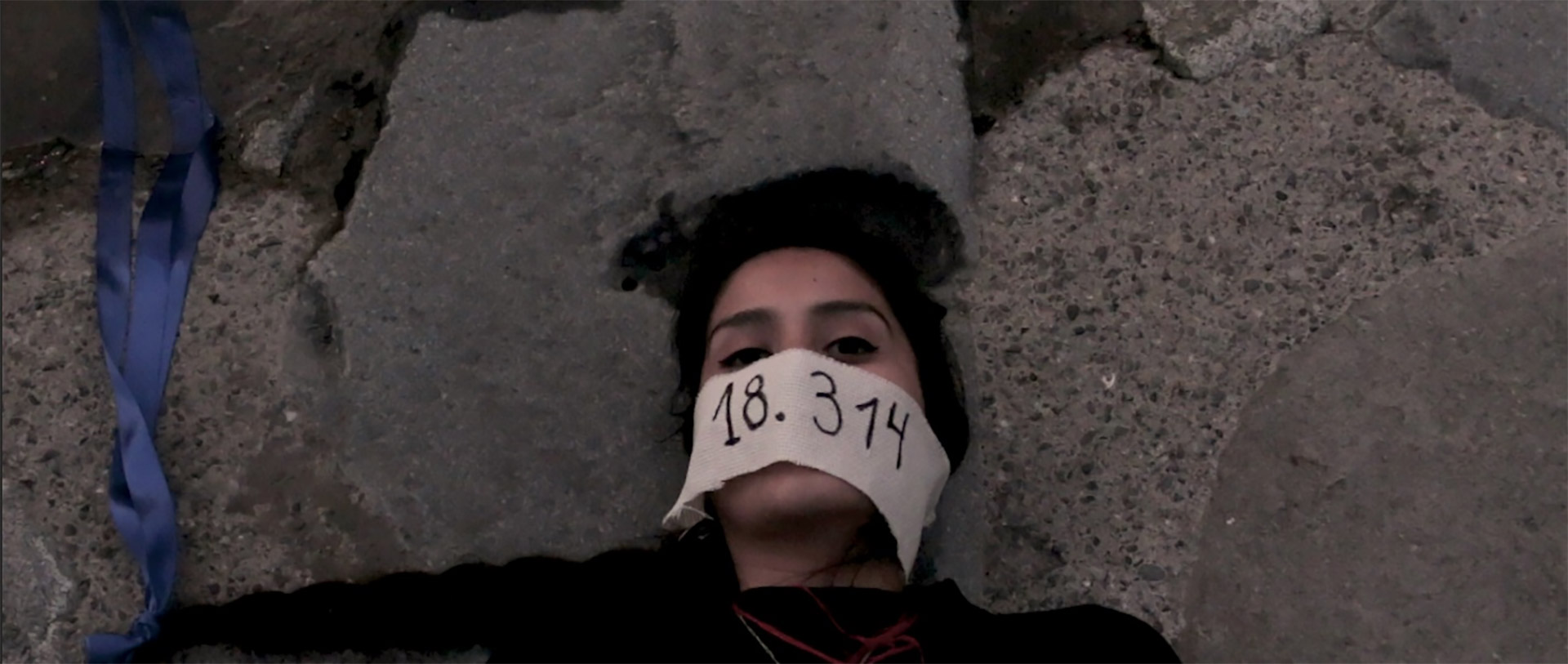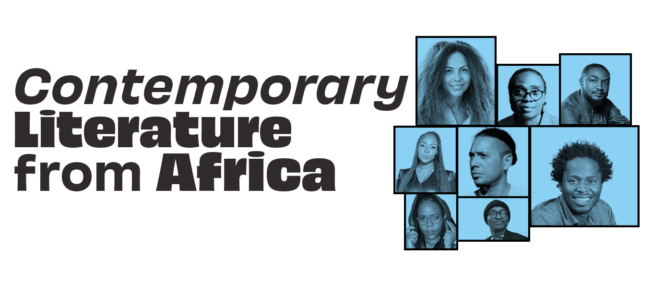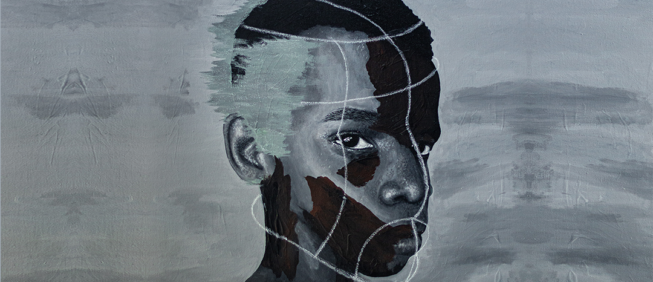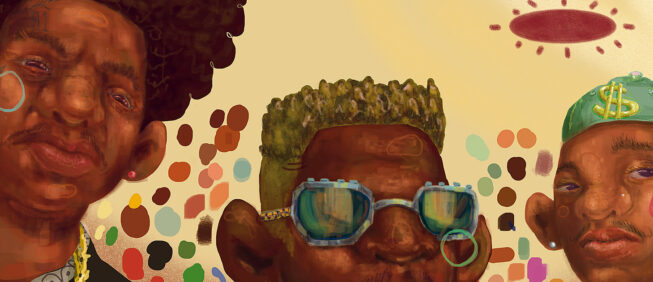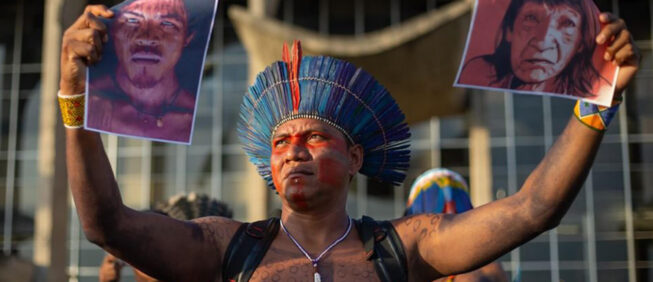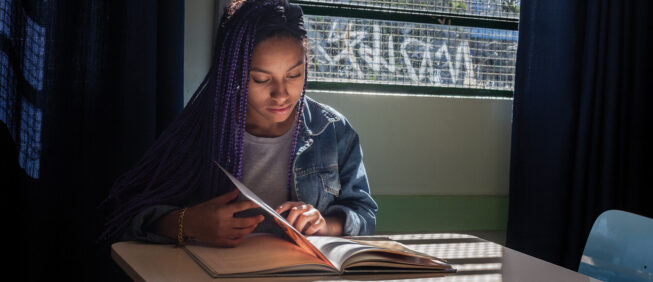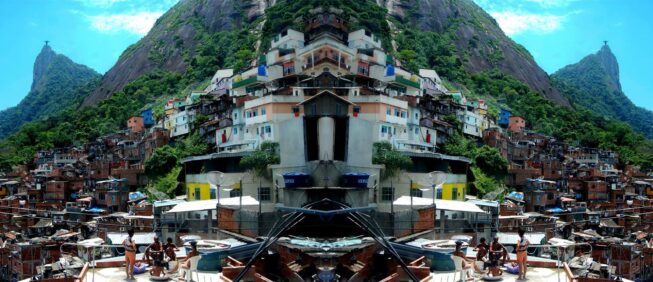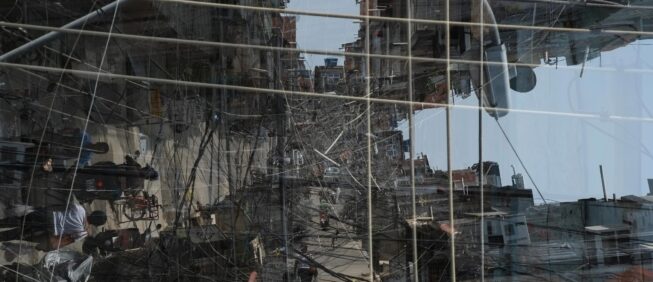Mapuche Intervention - Work 18.314: Mari pura warangka küla pataka mari meli
Visual Poetry: Daniela Catrileo
Photography: Rocío García
Editing and Introduction: Carolina Herrera
| Chile |
translated by Lemuel Robinson
The Mapuche people is the most represented original peoples living in what is today Chile. In colonial times they worked for the conquistadors, oligarchs, and landowners; later some began emigrating in search of opportunities to escape poverty just as the majority of people cut off from the metropolitan areas did. They have resisted since the Spanish conquistadors began his advance upon our territories: they have defended their lands for over 500 years without rest, neither forgiving nor forgetting. Against capitalist productive seizure they have raised generations of creators and professionals that intercede from the neoliberal metropolis while also constructing new, defiant adaptations of our unlikely survival -- all this from a position as productive as it is unstable.
We think, desire, and likewise have decided that these words and verses in Mapudungun not be translated. In this way their sonority from each one of our native languages invokes another voice, other meanings in the context of the present edition. From that, we have presented a conversation among we three women: an editor, a poet, and a filmmaker, with the intention of using that space to expose our views and to be better understood. We strive to give voice to the Mapuche people through the visual poetry of Daniela Catrileo by showing an until now unpublished work that is also fully realized in the present: Daniela did her finishing touches on Friday September 14th and Rocio finalized the photo editing on Wednesday the 20th, the same week that our country celebrated its September 18th Independence Day. This was a conscious act of resistance.
Carolina Herrera Águila
18.314
Mari pura warangka
küla pataka
mari meli
a n t i t e r r o r i s t l a w
I translate to Mapudungun
The numbers of our sentence
Tell me:
In what language should I speak so you hear me?
Mari pura warangka küla pataka mari meli: 18.314
This the number of a series of artistic interventions along with the number of the Chilean anti-terrorist law, translated into Mapudungun (the Mapuche language). This law classifies certain crimes and conduct as terrorist and prescribes more serious penalties. It was approved during the civil-military dictatorship of Augusto Pinochet in 1984, remaining until the present day with some modifications. The anti-terrorist law has been primarily applied to the Mapuche people.
Photography: Rocío García
First Act: Río Mapocho
Second Act: Tattooing
Third Act:
Poetic pamphlet made specifically for September 11th, taking advantage of the invitation to read in the former Santa Lucia Clinic1 This clinic was used as a detention and torture center during Chile’s military dictatorship, and is now named “Ex-Santa Lucia Clinic Memorial Site” in remembrance of the human rights violations that happened there., which is now a memorial site.
Each pamphlet is signed in red and numbered in Mapudungun, accompanied by photographs of remnants of the day’s intervention on September 11, 2018.
Production:
I decided to create a poem with instructions to cross-out and erase the number of the Chilean anti-terrorist law, and on the back creating a visual poem with the same number and its translation to Mapudungun. I hadn’t thought to consider this as part of the other acts but just today I decided finally to build a bridge between pu lamngen, those killed or disappeared during the dictatorship and those taken or killed under “democracy.” I believe the number functions as a continuum between legal language and its colonial implementation until today, an inheritance of dictatorship that worked as a mechanism of control over Mapuche bodies until today.
Materials:
-Recording with the names of Mapuches killed or abducted during dictatorship, with a pause to name pu lamngen killed or disappeared under “democracy.” The latter is repeated.
-Long white thread.
-Need and red embroidering thread.
-Down feathers.
-Loudspeaker.
-My hair.
-Attached pamphlet.
-Scissors.
Action:
-It begins with a portable speaker recording, the names ringing like a mantra.
-I look firmly at the public assistant while I braid my hair.
-On the fabric I write with black marker the number 18.314.
-I sew in a horizontal line in red thread over the number.
-I tie over my mouth the fabric with the crossed-out number, and continue recording the names. I look fixedly at each person present.
-When the break comes, I being cutting the fabric over my mouth from the bottom up.
-During the break I say the year 1990, letting the repetition of the names continue until I say the year 2018.
-I read the poem from the pamphlet.
Fourth Act: Museum of Pre-Columbian Art - Courts of Justice
18.314 Work dialogue: mari pura warangka küla pataka mari meli
What we are opening in this editorial space is a double channel with multiple streams: while we recognize that each sense, observation, and critical analysis, upon confronting other knowledge encounters a debate from which always emerges a poliphony, a peculiar thought that doubts, mistakes, turns back, avoids the real, definitive, authoritative truth; but this centripetal and centrifugal double movement (both of which are vital between systems and subsystems, between hegemonies and the margins), is our way of staying awake, conscious, critical, honest, and coherent while also contradictory and terrorist… In this oscillation we weave together a log of actions, writings, in essence just enough knowledge to continue trying to understand, not forgetting that it is a strategy to avoid the recurring framework of an order established by another.
Carolina: The idea that nagged at me a few months back when I was examining your poetics, of course which also was in relation to Peripheries journal (which addresses head-on the work and questions of our status on the periphery), was to not only give us the opportunity to talk about your work, but also especially to be able to exchange ways of seeing ourselves with all of the difficulty and wonder that the written word gives us.
I remember that when we met you told me about your experiences at meetings in different high schools and national schools, how boys and girls that didn’t necessarily know your poetry addressed you with natural informality, asking how you became the feminist Mapuche poet you are today--maybe not in those words, but in the same way--so, I would like to start there...when did this preoccupation enter your life, this sense and way of seeing our reality as society stacked against us? Was there always a division between our social territory, this mapuche consciousness in tension with Chilean consciousness?
Daniela: I believe this vision of the world came with experience. I grew up in an isolated neighborhood in the Capital that was located on the outskirts of the outskirts. When I was a girl they taught me that the middle class was invented for people like us. I always heard stories of injustice against us, of all kinds, for simply being who we were. I believe that a mountain of questions started to well up, questions that drove me to politics and art without me even planning it at all. It was a consequence of the need to express how I felt, what I observed, the anger my neighbors and family carried. We didn’t have anything. Being born with the Río Herido2Wounded River is the name of a poetry collection Catrileo wrote, and refers to idea of us all inheriting tainted language, and having to live in a world built by the sins of those that came before us comes from all of that. Being who I am is a consequence of history and my genealogy, the places and bodies I have inhabited. You are born with another way of seeing, when there is no space for ingenuity, you try to survive. We learned about racism, poverty, and classism from childhood, with small gestures that left it very clear who we were. This consciousness about ourselves, of permanent exclusion made us recognize ourselves as those who had lived with that hurt. What is meaningful is how one transforms this open wound into a cleavage point capable of collectivizing through community until it becomes political and not purely individualized suffering but creation--a weapon, a struggle.
Carolina: The strength of the poetic construction is as a means of struggle or as the only possibility to articulate a modality outside of operations, models, and politico-capitalist programs, a construct of hegemonic democracy. Then, considering this, it is the only way for some of us, that it must assume intellectualism as a bridge of understanding and knowledge...continuing from that, I am referring to the conversations, meetings, Mapudungun workshops, and poetry that you just had at the Museum of Memory and Human Rights and in the Cultural Palace of La Moneda. I’m also thinking about the experiences that you told me about in schools: that is to say on the other hand, your poetry has strong, direct meaning, even before, it was tremendously visual and concrete. So in looking for and participating in these dialogues, there is a bit of luck in being around, right? One sees, listens, and understands, but also there is the widespread notion that poetry linked to sensitive subjectivity, the idea that lyrical speakers are singular individuals that embody “individual suffering”--so two questions: How do you see the relationship between the collective and the poetic? What does their interaction look like? How do you choose the projects you participate in?
Daniela: I believe that this individuality in writing is very difficult. At least, I consider the place of poetry to be a bridge, a translation. We gather, collect, and pull together the stories, images, and words of others. I feel that the poet is inhabited by multiple voices that make up a body of work. Although someone gives it shape, those stories come from somewhere, and they coexist. In this way, for me poetry has a collective tone although it is written from within us individually. However, i also believe that you shouldn’t only be just married to books. Stories spring up from whatever space they find useful, and that’s why I believe in the need for interdisciplinary work, crossover projects, and above all questions that help to continue exploring and experimenting. Also, that’s how one creates these exchanges that become partnerships, be it through creating in workshops, talks, meetings, etc. That opportunity is urgent, it lets us dialogue. Finally these spaces are domains of dispute, worked through micro-politically. We can see each other, hear each other, look ourselves over so to speak. Learning from each other makes poetry a horizontal profession where without others, it wouldn’t exist.
Carolina: It’s important to put our voices into tension with others in forums, in open conversation with people holding seemingly different views in order to piece together a micropolitical environment that creates conscious subjects; this is the space where the intellectual and creation have a deep responsibility I think. I believe in...constructing sustainable cross-spaces that are born from our own domains, nearby, well-known, and constructed with others as spaces of resistance. That’s why, when I saw the first images of 18.314, mari pura warangka küla pataka mari meli circulating on social media--your body extended to the edge of the Mapocho River, your mouth covered by a cloth with the number of the anti-terrorist law--I thought precisely about this space for debating and reading, but also about spreading a poetic voice that embodies collective consciousness and awakens the individual; a voice that articulates itself onscreen in seemingly private way, but simultaneously as a complex subject to be debated.
From that need, is the vanity of the image fundamental as you see it, Rocio? How has it been working with Daniela? From which angle did you tackle being a filmmaker?
Rocío: First of all, thank you very much for including me here. It has already been a number of years that I’ve been working on documentary fiction. I have had ties with the Wallmapu3Geographic territory historically held and inhabited by the Mapuche people since one of my uncles lives on an island and I always travel there; there I made some friends that moved to Santiago looking for better economic prospects and also grow as women. The truth is none of these women is how they would have liked or even imagined: the life of moving from the country to the city is difficult and not at all romantic. I always felt privileged in the sense that I was able to study what I wanted to without impediment, to maybe have the luck that someone in the country doesn’t have. From that path I started to record and write because I believe that visualizing these stories is my mission. Here in Santiago I left know the work Río Herido, and there I interested myself in its story, in the whole matter of migration, of diaspora. Which was similar to and at the same time distinct from the story of the women I knew before. That drew me to writing it, which I think is important for women across Latin America to see. It was there that I told to her that I wanted to make a documentary, “No soy Aneche”, where I dealt with pieces of her life here in Santiago, showing to collectively open up spaces of resistance and creation, which sometimes also includes the poet’s work of mixing oneself into the urban landscape. There is still more to film, and more than enough to make a return trip to Wallmapu.
Until now I had recorded these acts about law 18.314 in pieces, and they had been short days where I tend to not cut in much since we generally always have prior conversations (what may one would be able to call “planning conversations”) where we talk about what we’ll do and how. So after it is simply choosing where to to put the camera, what lens we’ll use to capture these moments, where I should stay quiet and not cut in during the conversation. I carry some prepared sequences to include in the documentary, but they are also part of what we will show later as independent pieces.
The truth is that I am eagerly awaiting being able to meet with Dani, to see the material and give it a final form, the finishing touches, because I think that the theater ends with the viewer, one makes a film so people see it, not to self-eulogize or as a private exercise. The theater is a collective process and sometimes it takes up a lot of time; sometimes I am behind the camera and what is happening in front of me moves me so much: like the final shot in front of Tribunales where you could feel this incredible energy that made my hands tremble and my heart beat faster--it’s one of those things one has to know to work behind the camera. Also, knowing where to cut is a big decision...I always feel that I learn more--sometimes little things that seem of no importance, but in the long run are huge. I really like working with Dani because there is already this trusting bond, so we get by, and there is even a bond between us and her cat Albahaca who also appears in the recordings we’ve done: involving one’s private world in front the camera is something that few do, I find it to be tremendously political and brave.
Carolina: And you Daniela...how, from where, and toward what end do you form more concrete poetry?
Daniela: It’s better for me to go making pieces from what trips me up. What calls to me. In some form, so many images as symbols or concepts I go recovering as they take form, almost intuitively. I let each piece rest, soften its rhythm, and from there I keep shaping it until I’ve gotten to the heart of it. I never think beforehand: “This work will be done this way.” It’s better to be carried by the impulse of the object itself, whatever it is. For example in 18.314, it came out this way because I wanted the number to undergo changes, and in this respect it seemed that in the body and in different areas it would have greater power and visibility. Creating for me is almost a trance, a way of connecting myself deeply with its rhythm.
Imagining is pure vertigo--one is subdued by the work--after polishing it, we remove the dust and lend space to a dialogue that would seem to have had more foundation before, but was just noise. Although I do almost everything this way, I follow the signs that present themselves, almost as signals lighting the way. It’s nothing divine actually--it finds its voice in my wandering.
Carolina: Rocio, you touched on a topic, a fundamental question really, that I see and read as not at all commonplace: we are women attempting to understand and understand ourselves; from a place of difference we piece together a strip of knowledge, and I believe, consciousness. We are living and constructing a moment from the standpoint of visual and narrative poetry, avoiding being unoriginal while also being vessels of the collection of works that influence us, make impressions on us, and even in resistance we say, “How do they look, live, and create from their roots, but with a feminist consciousness?”
Rocío: I believe that in the work that we have been doing with Daniela there is this latent feminist consciousness to reposition us to an active place that is open to dialogue, to questioning, to observe and self-observer. The film is an eye to see inwardly and outwardly. Without a doubt when our work is ending, it will have to be accompanied and enriched by dialogue with other women that will surely have other experiences and stories to tell regarding law 18.314. If this work is accompanied by a registry, it’s unclear how it could influence other women in other places...I would very much like to record as much as possible because that seems important to me at any rte.
Daniela: In my case I only think that it shed light on one facet of the prism that we are. Just like any other political form of experiencing daily life. If something has taught me feminism that interests me, it is to be critical of the way hegemonic views present themselves in certain types of feminism in Chile.
And this translates into looking in each moment at who I am and what practices I display in the diverse communities that I am a part of. And this is by means of collectiveness, honesty, and coherence. To be awake to the multiple horrors that take place where we live. A radical empathy that influences those close to us, our relationships, our friendships, and how we forge our connections between ourselves and others. That’s why feminism alone is not enough for me, I need to be conscious of the other forms of oppression that manifest.
Chaltumay ka lemoria!4Thanks and well-wishes in mapundungun
Carolina Herrera Águila | Chile |
Professor and researcher. Her applied research delves into the tensions between contemporary art, culture, society, and politics. She currently co-directs los encuentros de prácticas curatoriales at the Museo Violeta Parra, which is part of the MICH collective, and coordinates the Carmen Waugh Archive, a fundamental collection for understanding contemporary Latin American art.
Iñche Daniela Catrileo Pingen | Chile |
Mapuche ka champurria iñche. Catrileo was born in San Bernardo, an Inca territory south of Santiago, the daughter of the Mapuche diaspora that migrated from fütra Waria. Iñche wirintuchefe ka filosofía kimelfe. She teaches writing in multiple forms, doing philosophy classes and leading workshops on Mapuche literature.She is part of the Mapuche Feminist Collective [Rangiñtulewfü]. She has written the books: Río Herido, Invertebrada, Guerra Florida, and the plaquettes Cada Vigilia and El Territorio del Viaje. She also co-wrote the book Niñas con palillos, winner of the Mustakis Prize.
Rocío Chávez García | Chile |
Filmmaker and screenwriter. Her first feature-film, “Pelokëlan” will premiere soon. She is currently working on the documentary “No syo Aneche” and the short story “Donde Mueren Las Ballenas.” In her work she deals with the search and exploration of language, the limits of fiction, and the documentary.
